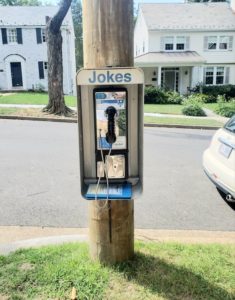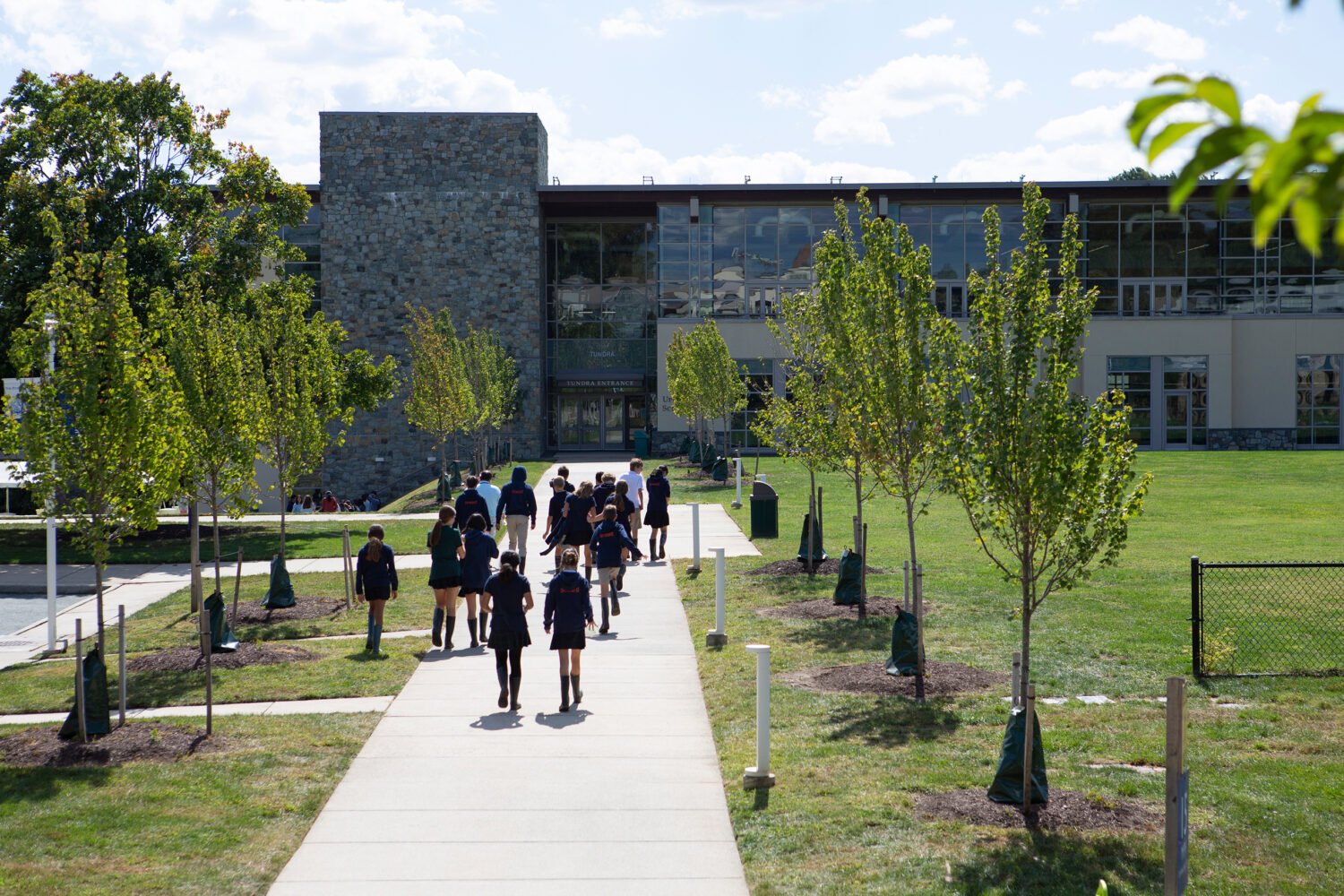
Earlier this year, a mysterious pay phone appeared on a residential street in Chevy Chase, DC. Locals were surprised to discover that it worked: You could lift the receiver and call anyone, anywhere, for free—no quarter required. But the phone actually had a more specific purpose, as made clear by the sign across the top: “Jokes.” Push “*1” and you got a knock-knock joke. Pressing “*2” yielded a joke for children, and so on. The idea was a fast hit with neighborhood residents, especially kids. But why was it there? And which local cut-up was behind it?
Some minor detective work recently revealed the answer. The jokes phone is the work of a substitute teacher at nearby Lafayette elementary named Don Rutledge, whose house is across the sidewalk from the phone. Rutledge is the kind of guy who likes to tinker, and he has a history of drumming up quirky projects (ask him about the cupcake car he keeps in the garage). The pay phone project just seemed like a fun idea, he says. Last year, he scored an old phone online—from a site called payphone.com, no less—then spent six months gutting it and transforming it into a homemade humor dispenser. It runs off of a microcomputer stashed inside the phone, and calls are routed through his home wi-fi. Part of the fun was figuring out how to make it work—wiring the electronics, writing 700 or so lines of computer code, and designing the phone-front signage that (sort of) explains the whole concept. Rutledge estimates he’s spent about $700, a figure he semi-jokingly describes as “embarrassing.”Still, people seem to love it. Maybe that’s because the gags aren’t an afterthought: Rutledge has put some effort into finding what he describes as “quality dad jokes,” and the phone now cycles through hundreds of bits that he’s recorded himself. Will they all make you laugh? “I mean, that’s in the eye of the beholder,” he says. (One of his personal favorites: “How does the polygamist hippie count his wives? One Mrs. Hippie, two Mrs. Hippie….”)

When the jokes phone first appeared on Northampton Street in late May, it was getting around 100 calls a day. That number dipped over the summer, but with school back, the usage is jumping again. And not all of the dialers are looking for giggles. The phone also offers random facts (“Did you know that most people can’t lick their elbows?”) and affirmations, both for kids (“School’s fun!”) and adults (“this moment is temporary”). If you press “0#,” it connects you to, as the front of the phone promises, “a random guy who thinks he has all the answers”: either Rutledge or whoever else happens to be nearby when the call comes through. Though Rutledge says he’s had a few interesting adult conversations that way, generally the callers are young. “Most of the time they’re freaked out that somebody actually answers,” he says. “Usually they hang up. But sometimes they stay on and I just talk to them. They’re like, ‘You’re not a real person—this is a robot, you’re AI.’ I’m like, ‘No, I’m a real person! How do I prove it?’ And sometimes the parents come on, concerned: They’re like, ‘Who are you talking to?’”
















